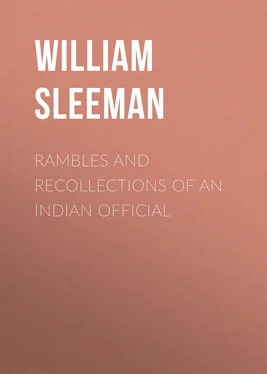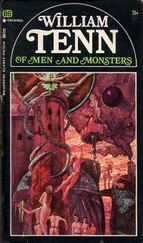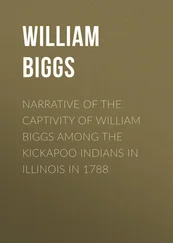William Sleeman - Rambles and Recollections of an Indian Official
Здесь есть возможность читать онлайн «William Sleeman - Rambles and Recollections of an Indian Official» — ознакомительный отрывок электронной книги совершенно бесплатно, а после прочтения отрывка купить полную версию. В некоторых случаях можно слушать аудио, скачать через торрент в формате fb2 и присутствует краткое содержание. Жанр: Путешествия и география, История, foreign_edu, foreign_antique, foreign_prose, на английском языке. Описание произведения, (предисловие) а так же отзывы посетителей доступны на портале библиотеки ЛибКат.
- Название:Rambles and Recollections of an Indian Official
- Автор:
- Жанр:
- Год:неизвестен
- ISBN:нет данных
- Рейтинг книги:4 / 5. Голосов: 1
-
Избранное:Добавить в избранное
- Отзывы:
-
Ваша оценка:
- 80
- 1
- 2
- 3
- 4
- 5
Rambles and Recollections of an Indian Official: краткое содержание, описание и аннотация
Предлагаем к чтению аннотацию, описание, краткое содержание или предисловие (зависит от того, что написал сам автор книги «Rambles and Recollections of an Indian Official»). Если вы не нашли необходимую информацию о книге — напишите в комментариях, мы постараемся отыскать её.
Rambles and Recollections of an Indian Official — читать онлайн ознакомительный отрывок
Ниже представлен текст книги, разбитый по страницам. Система сохранения места последней прочитанной страницы, позволяет с удобством читать онлайн бесплатно книгу «Rambles and Recollections of an Indian Official», без необходимости каждый раз заново искать на чём Вы остановились. Поставьте закладку, и сможете в любой момент перейти на страницу, на которой закончили чтение.
Интервал:
Закладка:
363
A.D. 1249 to A.D. 1371.
364
The Hindi spoken in different parts of Bundēlkhand comprises several distinct dialects: see Kellogg, A Grammar of the Hindī Language , 2nd ed., 1893; and Grierson, Linguistic Survey , vol. vi (1904), pp. 18-23, where the dialects of Eastern Bundēlkhand are discussed. Bundēlī, the speech of Bundēlkhand proper, will be treated as a dialect of Western Hindi in a volume of the Survey not yet published. Sir G. Grierson has favoured me with perusal of the proofs, and has used materials collected by me in the Hamīrpur District nearly forty years ago. Bundēlī has a considerable literature.
365
The editor was told of a case in which two chiefs suffered for beating their drums in Mahoba.
366
See ante , Chapter 23 note 11, and Chapter 26 note 14, and the authorities there cited. The Chandēl history occupies an important place in the mediaeval annals of India. Several important inscriptions of the dynasty have been correctly edited in the Epigraphia Indica . Mahoba is not now a 'ruined city'; it is a moderately prosperous country town, with a tolerable bazaar, and about eleven thousand inhabitants. It is the head-quarters of a 'tahsīldār', or sub-collector, and a station on the Midland Railway. The ruined temples and places in and near the town are of much interest. For many miles round the country is full of remarkable remains, some of which are in fairly good preservation. The published descriptions of these works are far from being exhaustive. The author was mistaken in supposing that the power of the Chandēls was broken by the Bundēlas. The last Chandēl king, who ruled over an extensive dominion, was Paramardi Deva, or Parmāl. This prince was defeated in a pitched battle, or rather a series of battles, near the Betwa river, by Prithīrāj Chauhān, king of Kanauj, in the year 1182. A few years later, the victor was himself vanquished and slain by the advancing Muhammadans. Mahoba and the surrounding territories then passed through many vicissitudes, imperfectly recorded in the pages of history, and were ruled from time to time by Musalmāns, Bhars, Khangārs, and others. The Bundēlas, an offshoot of the Gaharwār clan, did not come into notice before the middle of the fourteenth century, and first became a power in India under the leadership of Champat Rāi, the contemporary of Jahāngīr and Shah Jāhan, in the first half of the seventeenth century. The line of Chandēl kings was continued in the persons of obscure local chiefs, whose very names are, for the most part, forgotten. The story of Durgāvatī, briefly told in the text, casts a momentary flash of light on their obscurity. The principal nobleman of the Chandēl race now occupying a dignified position is the Rājā of Gidhaur in the Mungir (Monghyr) district of Bengal, whose ancestor emigrated from Mahoba.
The war between the Chandēls and Chauhāns is the subject of a long section or canto of the Hindi epic, the Chand- Rāisā , written by Chand Bardāi, the court poet of Prithīrāj, of which the original MS. in 5,000 verses still exists. It was subsequently expanded to 125,000 verses ( E.H.I. , 3rd ed., 1914, p. 387 note). The war is also the theme of the songs of many popular rhapsodists. The story is, of course, encrusted with a thick deposit of miraculous legend, and none of the details can be relied on. But the fact and the date of the war are fully proved by incontestable evidence.
367
The marriage of Durgāvatī is no proof that her father, the Chandēl Rājā, was powerful in Mahoba in the time of Akbar. It is rather an indication that he was poor and weak. If he had been rich and strong, he would probably have refused his daughter to a Gond, even though complaisant bards might invent a Rājpūt genealogy for the bridegroom. The story about the army of fifty thousand men cannot be readily accepted as sober fact. It looks like a courtly invention to explain a mésalliance. The inducement really offered to the proud but poor Chandēl was, in all likelihood, a large sum of money, according to the usual practice in such cases. Several indications exist of close relations between the Gonds and Chandēls in earlier times.
Early in Akbar's reign, in the year 1564, Āsaf Khān, the imperial viceroy of Karrā Mānikpur, obtained permission to invade the Gond territory. The young Rājā of Garhā Mandlā, Bīr Narāyan, was then a minor, and the defence of the kingdom devolved on Durgāvatī, the dowager queen. She first took up her position at the great fortress of Singaurgarh, north-west of Jabalpur, and, being there defeated, retired through Garhā, to the south-east, towards Mandlā. After an obstinately contested fight the invaders were again successful, and broke the queen's stout resistance. 'Mounted on an elephant, she refused to retire, though she was severely wounded, until her troops had time to recover the shock of the first discharge of artillery, and, notwithstanding that she had received an arrow-wound in her eye, bravely defended the pass in person. But, by an extraordinary coincidence, the river in the rear of her position, which had been nearly dry a few hours before the action commenced, began suddenly to rise, and soon became unfordable. Finding her plan of retreat thus frustrated, and seeing her troops give way, she snatched a dagger from her elephant-driver, and plunged it into her bosom. . . . Of all the sovereigns of this dynasty she lives most in the recollection of the people; she carried out many highly useful works in different parts of her kingdom, and one of the large reservoirs near Jabalpur is still called the Rānī Talāo in memory of her. During the fifteen years of her regency she did much for the country, and won the hearts of the people, while her end was as noble and devoted as her life had been useful' ( C.P. Gazetteer (1870), p. 283; with references to Sleeman's article on the Rājās of Garhā Mandlā, and 'Briggs' Farishta', ed. 1829, vol. ii, pp. 217, 218). A memoir of Āsaf Khan Abdul Majīd, the general who overcame Durgāvatī, will be found in Blochmann's translation of the Aīn-i-Akbarī , vol. i, p. 366.
368
Samthar is a small state, lying between the Betwa and Pahūj rivers, to the south-west of the Jālaun district. It was separated from the Datiyā State only one generation previous to the British occupation of Bundēlkhand. A treaty was concluded with the Rājā in 1812 (N.W.P. Gazetteer (1st ed.), vol. i, p. 578).
369
Gūjars occupy more than a hundred villages in the Jālaun district, chiefly among the ravines of the Pahūj river. The Gūjar caste is most numerous in the Panjāb and the upper districts of the United Provinces. It is not very highly esteemed, being of about equal rank with the Āhīr caste and rather below the Jāt. Gūjar colonies are settled in the Hoshangābād and Nīmār districts of the Central Provinces. The Gūjars are inveterate cattle-lifters, and always ready to take advantage of any relaxation of the bonds of order to prey upon their neighbours. Many sections of the caste have adopted the Muhammadan faith.
370
The small state of Chhatarpur lies to the south of the Hamīrpur district, between the Dasān and Ken rivers. The town of Chhatarpur, on the military road from Bānda to Sāgar, is remarkable for the mausoleum and ruined palace of Rājā Chhatarsāl, after whom the town is named. Khajurāho, the ancient religious capital of the Chandēl monarchy, with its magnificent group of mediaeval Hindoo and Jain temples, is within the limits of the state, about eighteen miles south-east of Chhatarpur, and thirty-four miles south of Mahoba. The Pawār adventurer, who succeeded in separating Chhatarpur from the Panna state, was originally a common soldier.
Читать дальшеИнтервал:
Закладка:
Похожие книги на «Rambles and Recollections of an Indian Official»
Представляем Вашему вниманию похожие книги на «Rambles and Recollections of an Indian Official» списком для выбора. Мы отобрали схожую по названию и смыслу литературу в надежде предоставить читателям больше вариантов отыскать новые, интересные, ещё непрочитанные произведения.
Обсуждение, отзывы о книге «Rambles and Recollections of an Indian Official» и просто собственные мнения читателей. Оставьте ваши комментарии, напишите, что Вы думаете о произведении, его смысле или главных героях. Укажите что конкретно понравилось, а что нет, и почему Вы так считаете.












